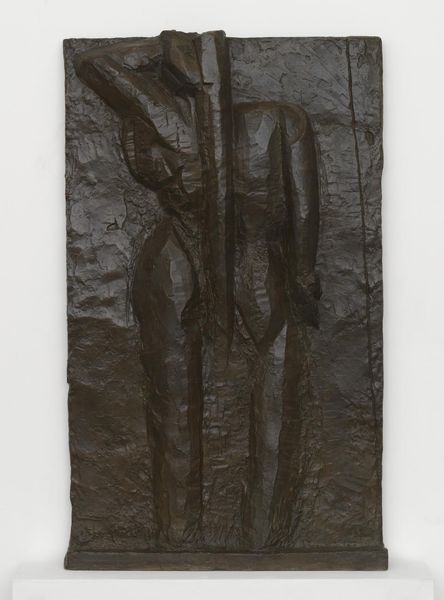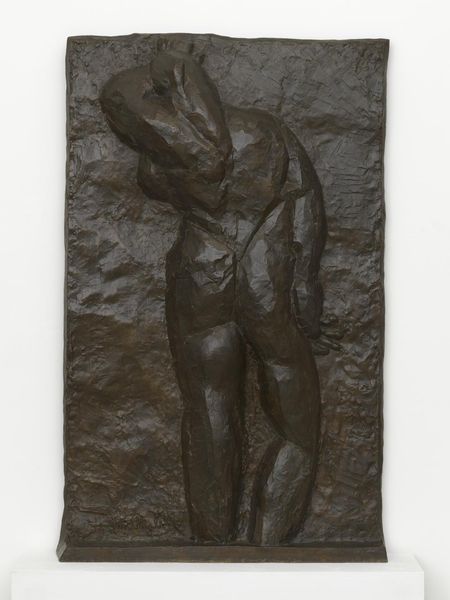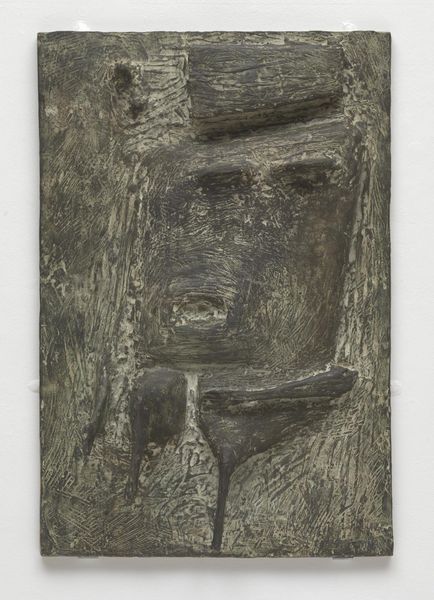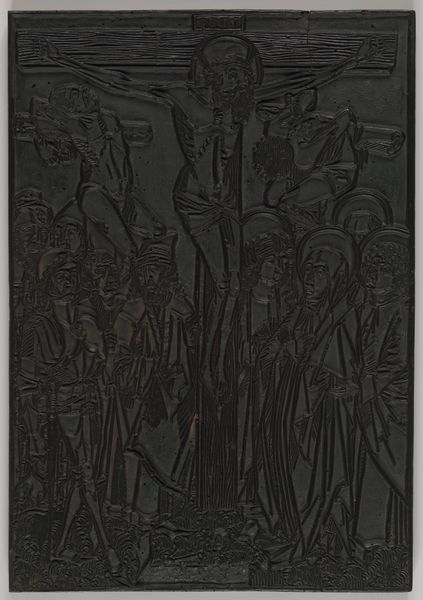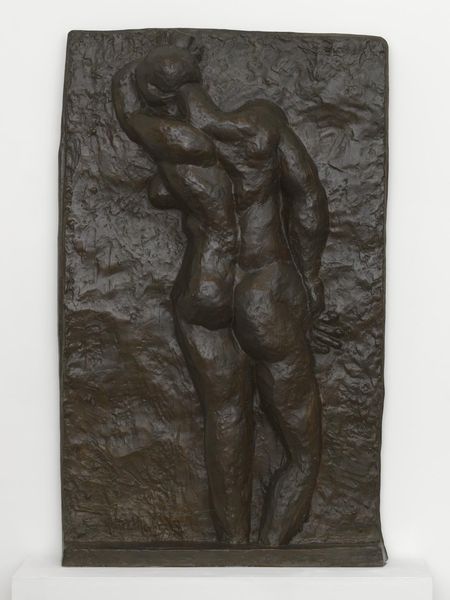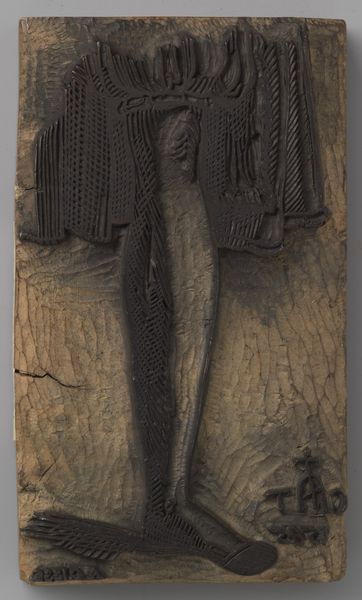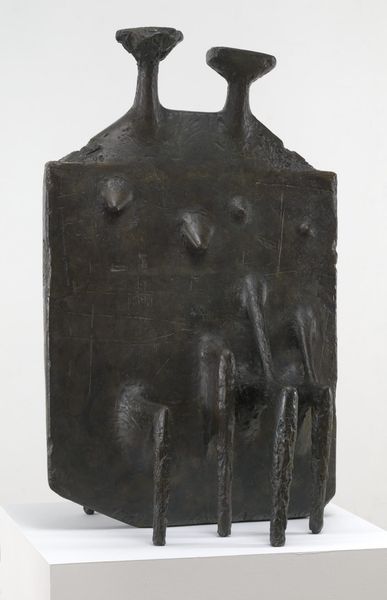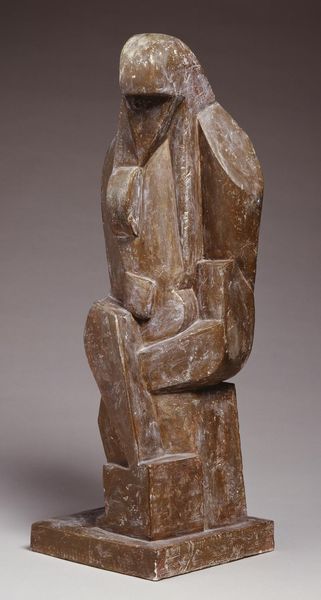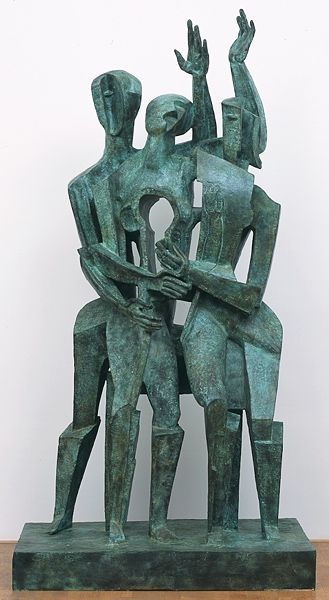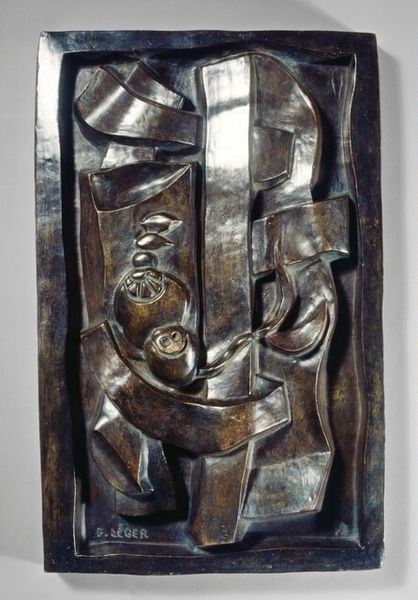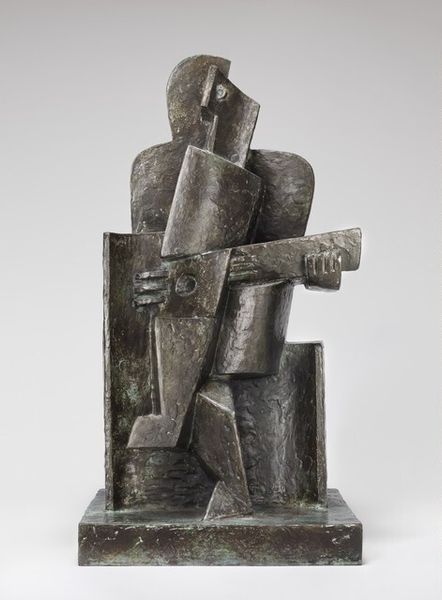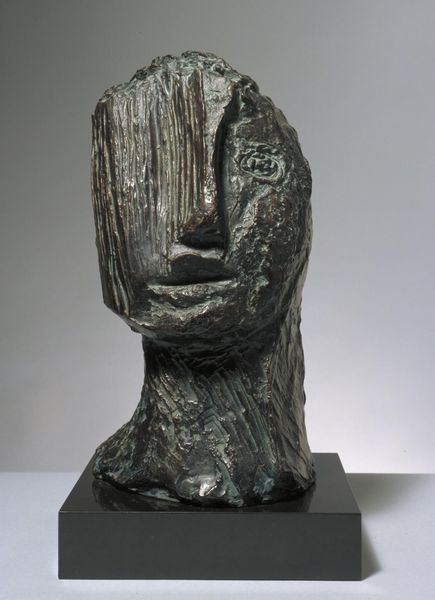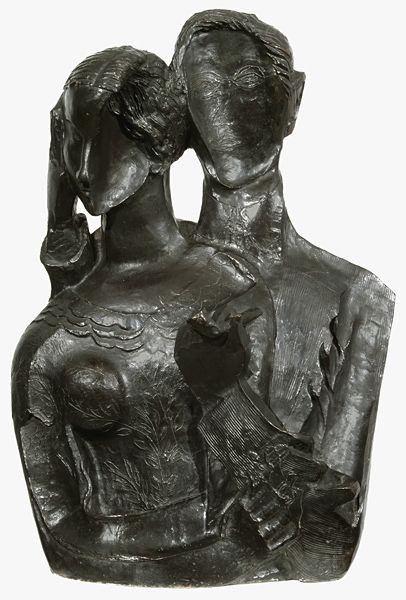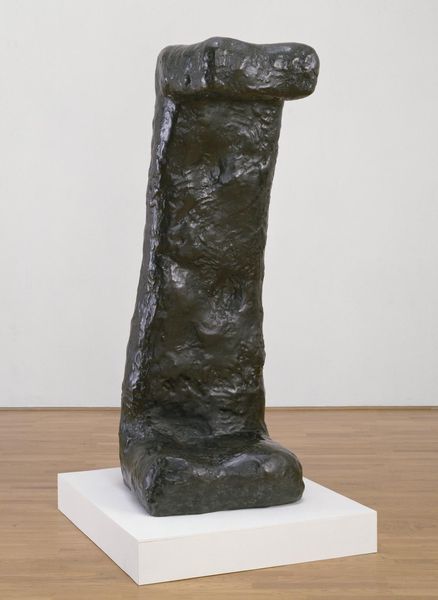
Dimensions: object: 1892 x 1130 x 159 mm
Copyright: © Succession Henri Matisse/DACS 2014 | CC-BY-NC-ND 4.0 DEED, Photo: Tate
Editor: This is Henri Matisse's "Back IV", a bronze relief sculpture, and I'm immediately struck by its monumental scale and simplified forms. What aspects of its formal construction do you find most compelling? Curator: The progressive abstraction of the figure across the series is key. Note how Matisse reduces anatomical detail, focusing instead on the interplay of positive and negative space and the vertical thrust of the composition. The rough surface texture also contributes to its visual weight. Editor: So the form itself communicates more than just the figure? Curator: Precisely. The sculpture's power lies in its exploration of form and mass, moving beyond mere representation to engage with fundamental sculptural principles. It is, therefore, a study of reduction. Editor: That’s a useful way to think about it, focusing on its pure structure. Curator: Indeed, by understanding the formal qualities, we gain a deeper appreciation for Matisse's artistic intent.
Comments
Join the conversation
Join millions of artists and users on Artera today and experience the ultimate creative platform.
tate 6 months ago
⋮
The Backs were Matisse’s largest sculptures. Over twenty years he progressively refined the original pose, based on a woman leaning on a fence, until he achieved a massive simplicity. Matisse’s decision to show the back view of a woman on such a monumental scale was unorthodox. By concealing her face, he avoided the complexities of visual engagement between artist and model. This helped him to consider the nude as an arrangement of forms that he could simplify and stylise. In the final sculpture, the modelling of flesh has given way to the massing of androgynous bulk and the gently curved spine has been replaced by an abstracted plait. Although Back I had been exhibited in 1913, the series remained almost unknown until 1949–50 when the plaster Backs I, III and IV appeared in exhibitions in Paris and Lausanne. Back II was only rediscovered after Matisse’s death, while an even more naturalistic first version is now only known from a photograph. All were cast in bronze after his death. Gallery label, October 2016
